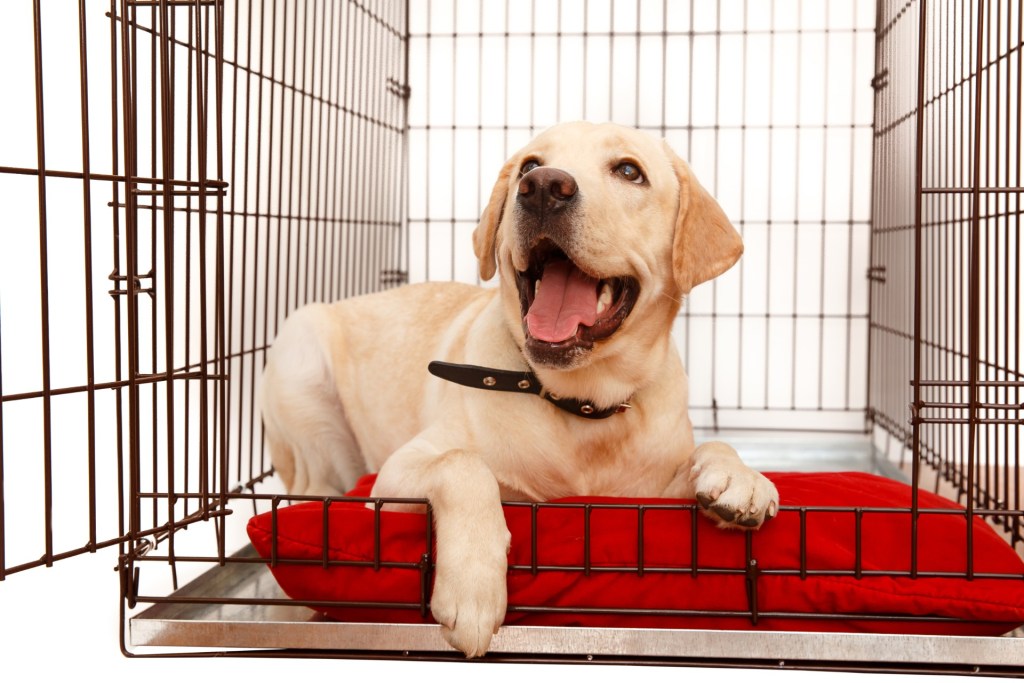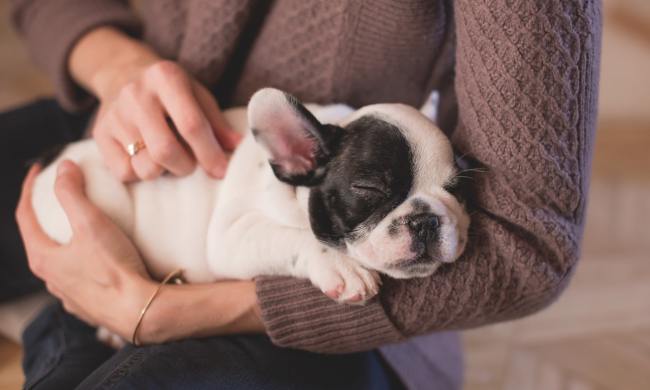Dogs like to sleep in so many places: in your bed, in their own bed, on a sunny spot on the floor, and in their dog crate, to name a few. But that’s not the only thing a crate is helpful for. It can keep your canine friend out of mischief and give you peace of mind when you’re out of the house. A dog crate should ideally be a place of security and comfort for your pup (and it can be even better if you personalize it for their own unique needs). Of course, this raises the question of where to put a dog crate.
Have you been Googling something like, “Where to put dog crate?” We’ve got you covered! Always remember that a dog crate is supposed to create a safe space for your pet, while also assisting in their training, so the way you utilize that space in your home is essential for both of you.
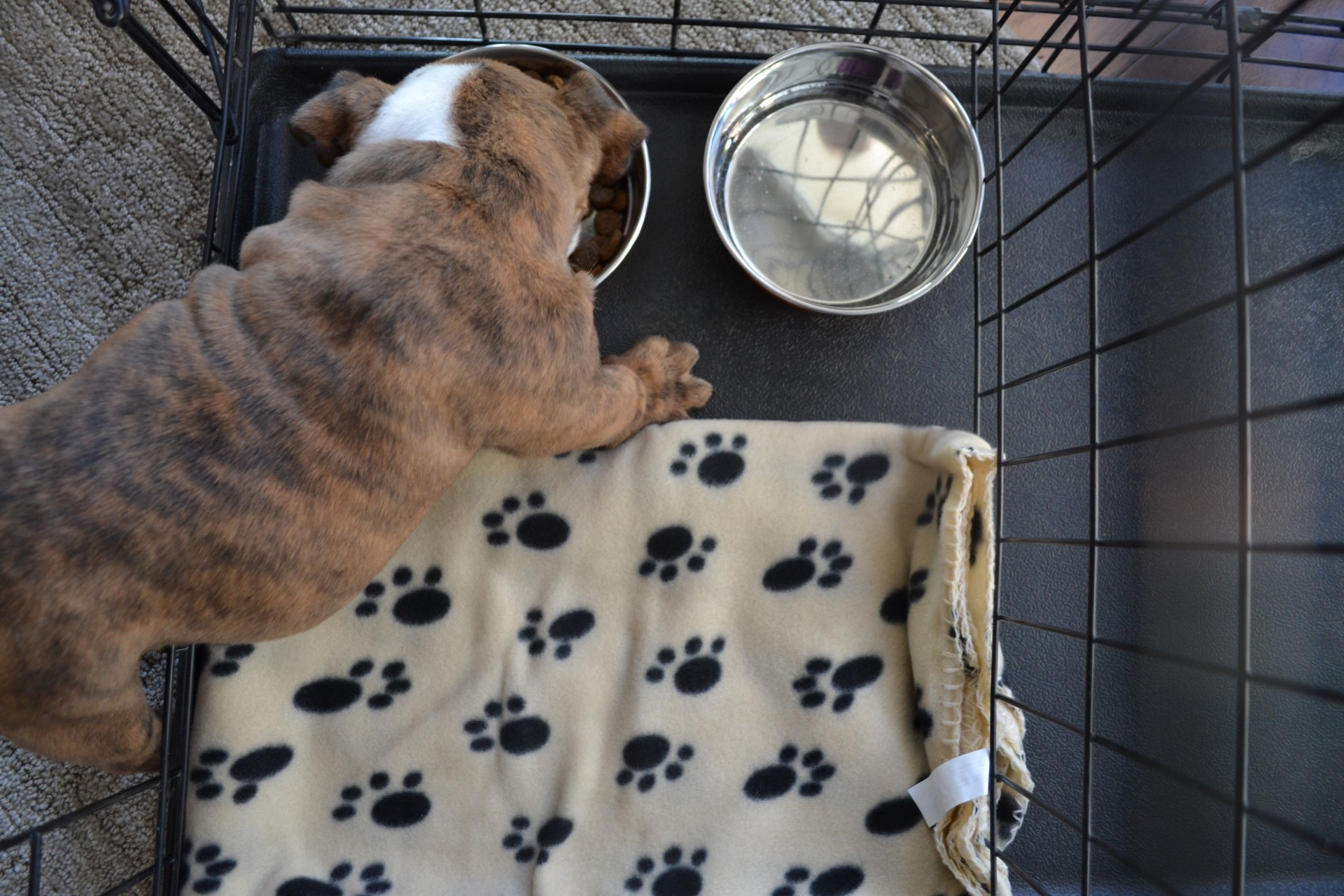
Where to put a dog crate in your home — it depends on these important factors
Dogs are known for being very social animals — they love being close to their owners. In fact, dogs are considered a part of the family’s daily life. Thus, your crate must give your pooch a positive experience instead of a traumatic, negative one.
A high-traffic area is best for social pups that enjoy lots of time with family
For dogs who enjoy lots of social time, the best place to put your preferred dog crate is in a busy area. This location will help your dog feel the vibe of the household and make them feel like a real family member. They’ll be literally in the middle of it all!
Whether you’re crate training a new puppy, introducing a crate to an older dog, or simply offering your dog a place of their own, there will be benefits to placing the crate in the middle of the home. This will enable your dog to see all the activities going on in the household. It will make them feel included in the family. Hiding the crate away in a basement or laundry room, for instance, is completely unfair, as your dog will be excluded from all activities carried out in the home.
The precise location for placing your dog crate varies from one house to another. For some, it can be in the living room; for others, it can be in the kitchen or any other busy place. Ensure your dog crate is located where activities in the house are visible, so your dog won’t worry about being left alone.
A quiet spot, such as a back bedroom, may be best for anxious dogs or those that need space
Alternatively, you can place your dog’s crate in a quieter area of your home. This may contradict our previous though, but sometimes a central location can be too overstimulating for a shyer pet. Parties, animated family mealtimes, loud music, and guests coming around can lead to dog anxiety. This is when having quiet refuge for your dog to escape to is important.
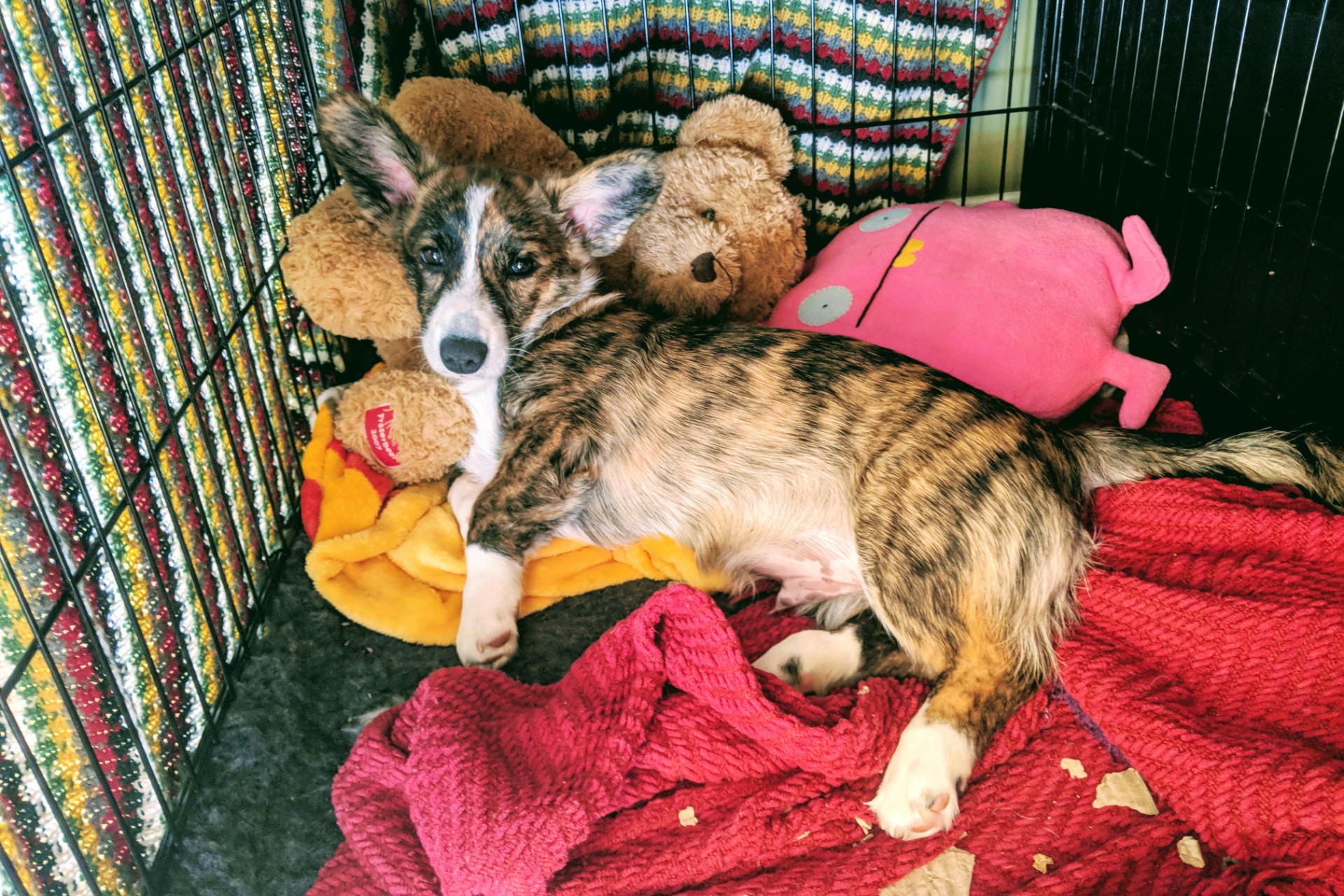
What about placing a dog crate in my bedroom?
If you are caring for a puppy, your bedroom is an ideal location for their crate. Your bedroom will certainly give your baby that warm, inclusive feeling. This transition of coming home can be difficult, to say the least, so having someone nearby will be comforting.
At the very least, move the crate to your bedroom at night. A puppy sleeping in another room will feel insecure, stressed, and even abandoned. If you don’t want to move the crate from the bedroom to the living room or kitchen every day, getting a second crate isn’t a bad idea.
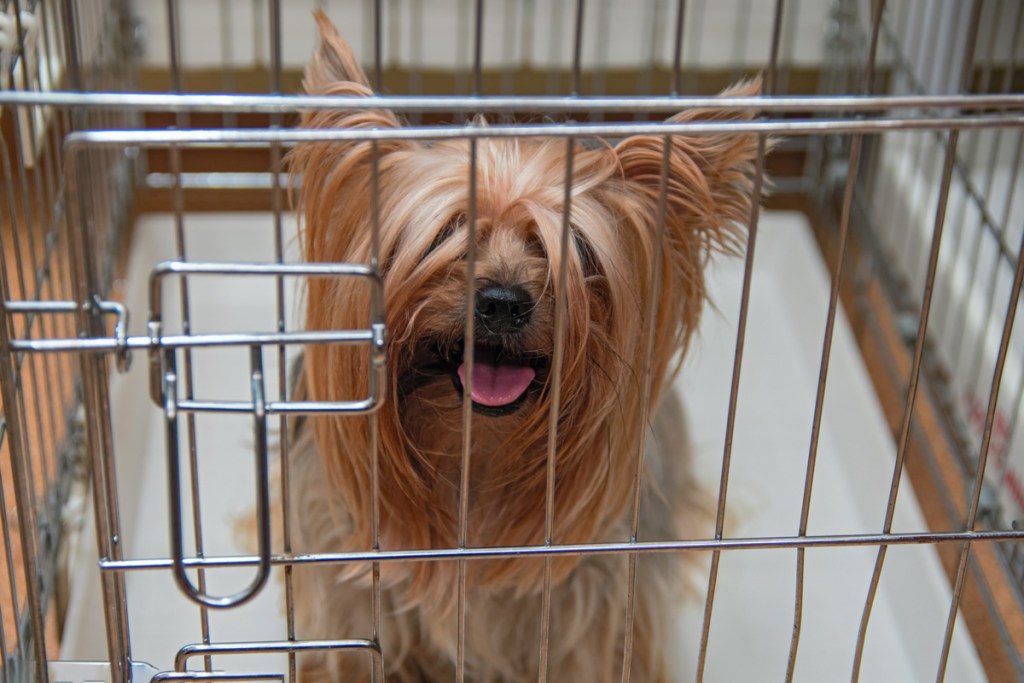
Tips for choosing a spot for your dog crate
- When choosing the location for your dog crate, ensure it is far from the fireplace or radiator — you don’t want your dog’s blankets to catch fire by accident. You wouldn’t want your pup getting overheated, either!
- The location should not be drafty, as that can adversely affect your dog’s health over time. Avoid locations that are extremely cold or in an exposed area.
- Avoid direct sunlight.
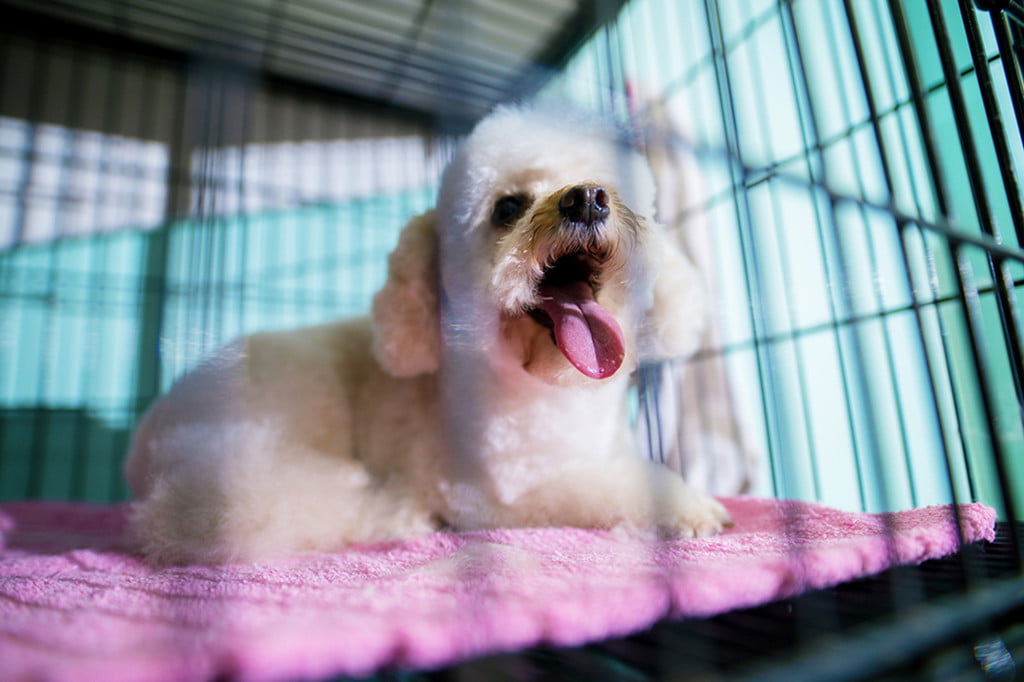
Dog crate safety 101: The location isn’t the only important factor to consider
If this will be the first crate you purchase for your dog, you’ll want to know a few basics to keep your fur baby as safe and comfortable as possible.
- Crate size. A dog’s crate should give them just enough room to stand up and turn around, but not enough room that they could go to the bathroom in the crate.
- Don’t place anything on the crate. Remember, just because your dog’s crate is in a busy area of the house doesn’t mean it’s a piece of furniture. Never place anything on top of the crate heavier than 1 pound unless you splurge for a specially made crate built into a table.
- Avoid hazardous items. Don’t place your dog’s crate near power outlets, toxic plants, or other hazards.
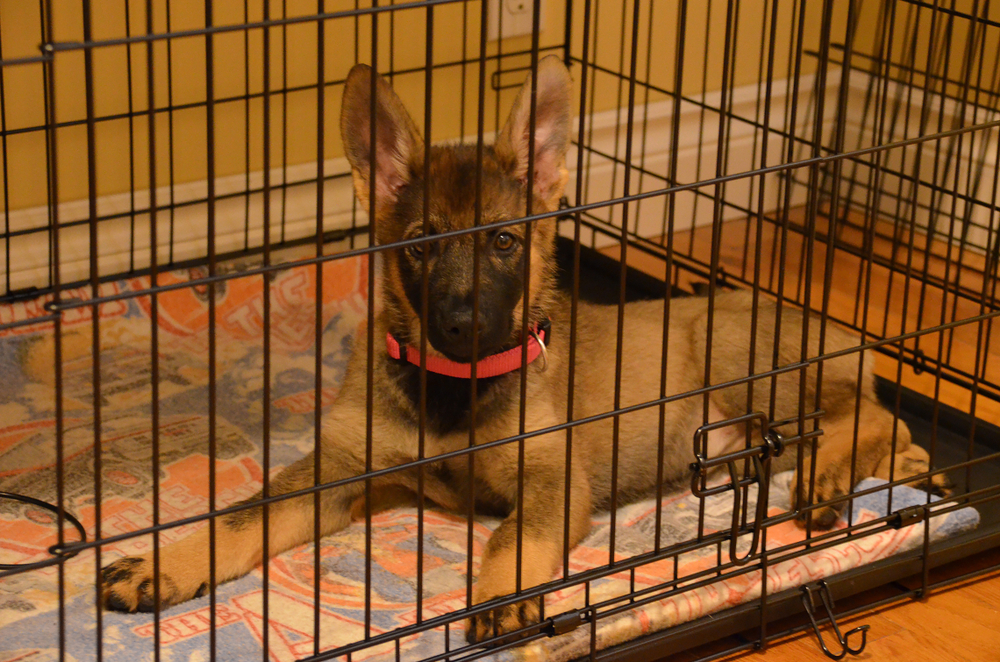
Potential problems
Many veterinarians and trainers recommend crate training — and for good reasons. It gives your pet a safe, secure place to go (and can prevent your pup from getting into items in your home, including toxic ones, during training). However, some issues may include:
- Whining. Your dog’s whine may break your heart. See if your pet needs to go out to potty.
- Separation anxiety. Whining may be from separation anxiety — and crate training won’t solve it. Separation anxiety often triggers destructive behaviors, like chewing blankets. Talk to your vet if you notice this behavior.
You may wonder if you should move the crate if you notice these issues. On the plus side, moving the crate may help with whining. For example, your pet may do better if they can see you (so move it to your bedroom) or if you two are separate at night (so move it out). Your vet is a great resource and can recommend trainers should you have issues with crate training.
When deciding on a spot for your dog crate, consider your dog’s personality and your family’s lifestyle. Keeping a dog crate in a highly visible, high-traffic area is a good idea, enabling your dog to feel like part of the family. However, if you have an anxious dog or your family is a bit too rambunctious, it might be best to place the crate in a quiet corner so your dog can escape the noise and commotion. When in doubt, get two crates, so you can always have the right location for your pup’s crate without lugging it around.
